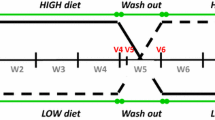Summary
The absorption and elimination of orally administered14C-phenylbutazone and the role of oxidation in its metabolism have been studied. The main routes of excretion of14C-phenylbutazone and its metabolites were investigated in 3 patients with rheumatoid arthritis, and in 1 patient with a T-tube in the common bile duct. Up to 9 days after an oral dose of14C-phenylbutazone 600 mg (30 µCi) 63% of the radioactivity was found in the urine and 14% had appeared in the faeces. The cumulative excretion of radioactivity in bile amounted to 9.5% of the dose in 4 days. Only 1% of the radioactivity in the urine and bile was due to unchanged phenylbutazone. The role of oxidative metabolism of phenylbutazone in healthy human subjects was studied by gas chromatography. In 3 subjects given a single dose of phenylbutazone 600 mg, only 8.3% of the dose was excreted in urine as oxidized metabolites after 5 days. However, in 5 patients who had taken phenylbutazone for more than 5 weeks, these metabolites accounted for 23.4% of the dose. These results suggest that oxidative metabolism becomes more important after continued administration of the drug. After a single dose of phenylbutazone, the side-chain oxidized metabolite (II) was the major free derivative excreted in urine, but the ring oxidized metabolite, oxyphenbutazone (I), was much more important than the former in plasma. However, after prolonged treatment there was little difference between the concentration of the two metabolites in plasma. This finding suggests that side-chain oxidation is increased relative to ring oxidation on prolonged treatment with phenylbutazone. A third derivative containing hydroxyl groups both in the phenyl ring and in the side-chain (metabolite III) was found in urine in experiments with phenylbutazone, but in only one out of 3 volunteers given repeated doses of oxyphenbutazone.
Similar content being viewed by others
References
Davies, D.S., Thorgeirsson, S.S.: Individual differences in the plasma half-lives of lipid soluble drugs in man. Acta pharmacol. toxicol. (Suppl.) (Kbh.)29, 181–190 (1971)
Hvidberg, E.F., Buch Andreasen, P., Ranek, L.: Plasma half-life of phenylbutazone in patients with impaired liver function. Clin. Pharmacol. Ther.15, 171–177 (1974)
Kellermann, G., Luyten-Kellermann, M., Horning, M.G., Stafford, M.: Correlation of aryl hydrocarbon hydroxylase activity of human lymphocyte cultures and plasma elimination rates of antipyrine and phenylbutazone. Drug Metab. Dispos.3, 47–50 (1975)
Bakke, O.M., Draffan, G.H., Davies, D.S.: The metabolism of phenylbutazone in the rat. Xenobiotica4, 237–254 (1974)
Burns, J.J., Rose, R.K., Goodwin, S., Reichenthal, J., Horning, E.C., Brodie, B.B.: The metabolic fate of phenylbutazone (Butazolidin) in man. J. Pharmacol. exp. Ther.113, 481–489 (1955)
Dieterle, W., Faigle, J.W., Früh, F., Mory, H., Theobald, W., Alt, K.O., Richter, W.J.: Metabolism of phenylbutazone in man. Arzneim.-Forsch. (Drug Res.)26, 572–577 (1976)
Richter, W.J., Alt, K.O., Dieterle, W., Faigle, J.W., Kriemler, H.P., Mory, H., Winkler, T.: C-glucuronides, a novel type of drug metabolites. Helv. Chim. Acta58, 2512–2517 (1975)
Carmichael, R.H., Crabtree, R.E., Ridolfo, A.S., Fasola, A.F., Wolen, R.L.: Tracer microspheres as a faecal marker in balance studies. Clin. Pharmacol. Ther.14, 987–991 (1973)
Conney, A.H., Davison, C., Gastel, R., Burns, J.J.: Adaptive increases in drug-metabolizing enzymes induced by phenobarbital and other drugs. J. Pharmacol. exp. Ther.130, 1–8 (1960)
Chen, W., Vrindten, P.A., Dayton, P.G., Burns, J.J.: Accelerated aminopyrine metabolism in human subjects pretreated with phenylbutazone. Life Sci.1, 35–42 (1962)
Perel, J.M., McMillan Snell, M., Chen, W., Dayton, P.G.: A study of structure-activity relationships in regard to species difference in the phenylbutazone series. Biochem. Pharmacol.13, 1305–1317 (1964)
Herrmann, B.: Über den Stoffwechsel des Butazolidin. Med. Exp. (Basel)1, 170–178 (1960)
Burns, J.J., Rose, R.K., Chenkin, T., Goldman, A., Schulert, A., Brodie, B.B.: The physiological disposition of phenylbutazone (Butazolidin) in man and a method for its estimation in biological material. J. Pharmacol. exp. Ther.109, 346–357 (1953)
Jähnchen, E., Levy, G.: Determination of phenylbutazone in plasma. Clin. Chem.18, 984–986 (1972)
Author information
Authors and Affiliations
Rights and permissions
About this article
Cite this article
Aarbakke, J., Bakke, O.M., Milde, E.J. et al. Disposition and oxidative metabolism of phenylbutazone in man. Eur J Clin Pharmacol 11, 359–366 (1977). https://doi.org/10.1007/BF00566533
Received:
Revised:
Accepted:
Issue Date:
DOI: https://doi.org/10.1007/BF00566533




